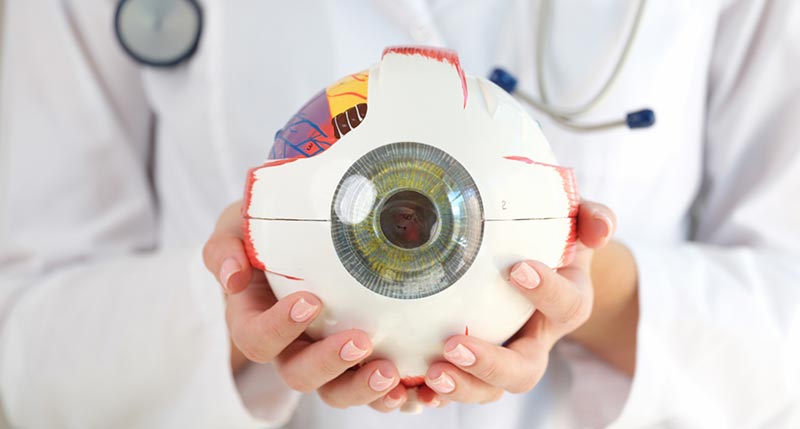Neurologist in Andalusia: Leading Specialists and Clinics Detailed
Neurologist in Andalusia: Leading Specialists and Clinics Detailed
Blog Article
The Pros and Cons of Various Refractive Surgical Treatments for Improved Eyecare

LASIK Surgery
LASIK surgical treatment is a commonly executed refractive treatment that intends to deal with vision concerns such as farsightedness, astigmatism, and nearsightedness. This medical strategy has actually obtained popularity as a result of its performance in offering clients with more clear vision and reducing their reliance on glasses or call lenses. During the procedure, a slim flap is created on the cornea, and a laser is made use of to improve the underlying tissue, remedying the refractive mistake. The flap is after that repositioned, permitting for quick recovery and marginal discomfort for the person.
Among the key advantages of LASIK surgical treatment is the quick improvement in vision experienced by several people. A lot of people notice a considerable improvement in their eyesight soon after the treatment, with very little downtime required for healing. Additionally, LASIK is recognized for its high success rate and low occurrence of complications when performed by competent specialists. Like any kind of surgical treatment, LASIK additionally lugs some risks, including completely dry eyes, glare, halos, and under or overcorrection of vision. It is important for people taking into consideration LASIK surgical procedure to undergo a thorough examination by an eye care specialist to establish if they appropriate candidates for the treatment.
PRK Treatment
The PRK treatment, likewise known as Photorefractive Keratectomy, is a kind of refractive surgical treatment that aims to fix vision concerns similar to LASIK surgical treatment. Unlike LASIK, which entails producing a flap in the cornea, PRK functions on the surface area layer of the cornea.
One of the advantages of PRK over LASIK is that it removes the threat of flap-related problems because no flap is created during the surgical treatment. This can be useful for people with slim corneas or those entailed in call sports where eye trauma is a possibility. However, the recuperation time for PRK is typically longer compared to LASIK, as the external layer of the cornea requires time to regrow after the procedure. In spite of the longer recovery duration, PRK can be an appropriate choice for people looking for vision click for more info modification surgery.
SMILE Surgical Treatment
A sophisticated refractive surgical treatment strategy gaining popularity in the field of ophthalmology is SMILE Surgery. Little Incision Lenticule Extraction (SMILE) is a minimally intrusive treatment that fixes vision by reshaping the cornea utilizing a femtosecond laser. Unlike standard LASIK surgical procedure, SMILE Surgical treatment includes developing a little laceration in the cornea to extract a lenticule, which leads to much less disturbance to the corneal structure and potentially much faster healing times.
Among the main benefits of SMILE Surgical treatment is its capacity to deal with nearsightedness (nearsightedness) and astigmatism with high precision, resulting in exceptional visual outcomes for people. The minimally intrusive nature of the treatment also lowers the risk of complications such as dry eye disorder, making it a positive option for people looking for refractive surgical procedure.

LASEK Strategy
Having checked out the benefits and factors to consider of SMILE Surgical treatment, one more significant refractive surgical procedure technique worth taking a look at is the LASEK Method. LASEK, which represents Laser-Assisted Subepithelial Keratectomy, is a type of laser eye surgical treatment that intends to deal with refractive mistakes such as myopia (nearsightedness), hyperopia (farsightedness), and astigmatism.
Unlike LASIK, LASEK does not involve developing a corneal flap. Rather, throughout a LASEK procedure, the doctor uses a diluted alcohol solution to loosen up the slim external layer of the cornea, recognized as the epithelium.
Among the primary advantages of LASEK is that it can be ideal for individuals with thin corneas that might not be good candidates for LASIK. In addition, LASEK typically leads to very little post-operative pain and a quicker recuperation time contrasted to PRK. However, the visual recovery process with LASEK may be slightly longer than with LASIK.
Implantable Call Lenses
Implantable Get in touch with Lenses offer a long-lasting vision adjustment option for individuals looking for an alternative to conventional call lenses or glasses. These lenses, likewise referred to as phakic intraocular lenses, are operatively inserted into the eye to deal with refractive mistakes such as nearsightedness (nearsightedness), hyperopia (farsightedness), and astigmatism. andalusia pediatrics. Unlike traditional contact lenses that remain on the surface area of the eye, implantable contact lenses work within the eye itself, providing clear vision without the requirement for day-to-day upkeep or removal
Among the vital advantages of implantable get in touch with lenses is their permanence. As soon as placed, they can remain in the eye forever, supplying secure and constant vision adjustment. In addition, these lenses can be a superb option for people who are bad prospects for laser eye surgical treatment or who choose a relatively easy to fix vision improvement treatment.
However, implantable contact lenses do carry some more information threats, including the potential for cataracts or raised eye pressure. It is important for individuals considering this choice to seek advice from an eye care expert to figure out if implantable contact lenses are the right selection for their specific requirements and eye health.
Verdict
In final thought, each type of refractive surgical treatment has its very own benefits and drawbacks. LASIK surgical discover this procedure is preferred for its fast healing time, while PRK procedure might be ideal for individuals with thin corneas.

Generally, SMILE Surgical procedure provides an appealing choice for individuals looking to boost their vision through refractive surgery.
Report this page